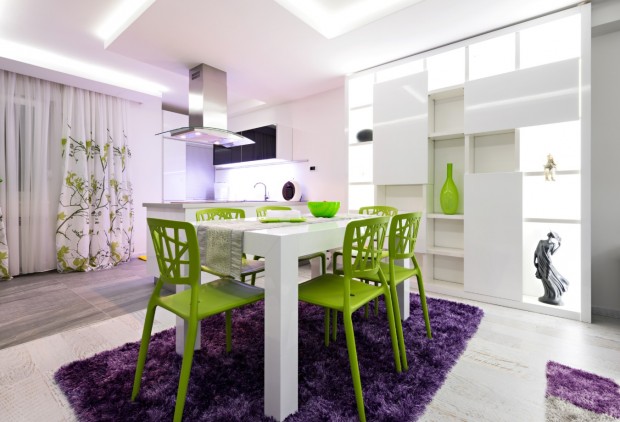How can your lighting affect a room?


When it comes to interior design, lighting is something which you should give a good deal of time and attention to. It doesn’t matter if you’re redecorating a single room because you feel like a change, or are giving your entire home a makeover, lighting plays a key role.
For some people, lighting is viewed as an essential part of the home for a purely functional reason, but these people are failing to see the bigger picture. With the right lighting in place you can completely transform the look and feel of a room, or an entire home.
Lighting can make a small room feel larger
For many homeowners, a common issue they may be faced with is how to decorate a small room to make it feel as large and open as possible. While you may not be able to change the actual size of the room – you can’t magically pull more space out of thin air – there are a number of things you can do to make the room look and feel larger. One of the easiest ways to make your room feel as large as possible is by making some smart changes to your lighting.
Natural light will immediately make a room appear larger, but if your room doesn’t have windows, or has fairly small windows, there are other things you can do. You could consider upgrading the windows in your room, Ohio Roofing Solutions suggests that larger windows that allow more light will make a huge difference. You can make a room seem larger by drawing people’s gaze upwards, as when the eye moves vertically, rather than horizontally, rooms seem larger. Try placing light fittings higher up on your walls, or perhaps try adding some hanging lights from your ceiling.Recessed lighting can have a similar effect, with lights set into the ceiling or wall. These lights won’t take up any additional space in your room, but will make it feel brighter and more open.
Lighting can affect the mood of a room
You will often find people saying how they feel happier and more upbeat during the bright, sunny days of spring and summer, and feel more downbeat and lethargic during the dark nights of winter. While part of this will be to do with personal preference and various other factors, lighting has been proven to have a noticeable effect on our moods.
Some scientists claim that lighting affects the regulation of emotions through the nervous and endocrine systems, leading us to feel happy or sad. Decreasing the amount of light someone receives could lead to feelings of sadness, while increasing light could lead to more positive emotions.
Other people will refer to circadian rhythms, which are physical, mental and behavioural changes that follow a 24 hour cycle and respond to light and darkness. Your circadian rhythm can affect a range of things including melatonin secretion and alertness. If changes in lighting disrupt your circadian rhythm, this can lead to mood swings and other emotional and behavioural responses.